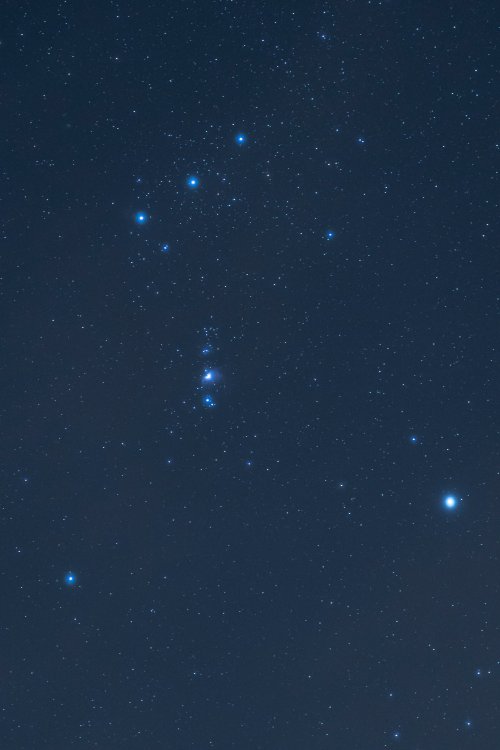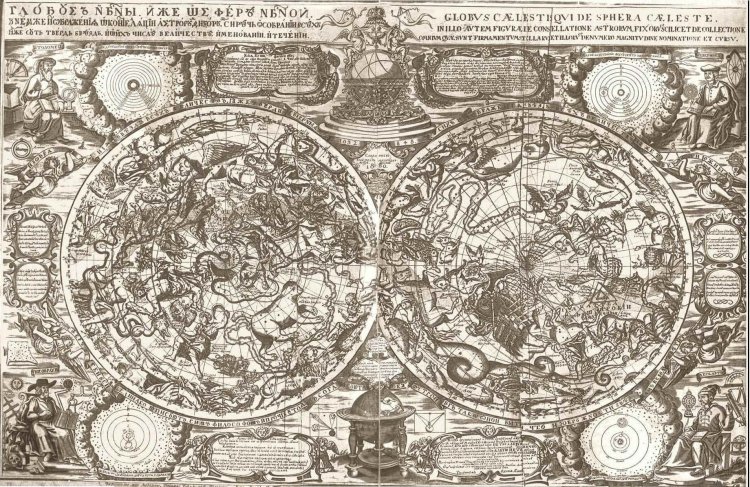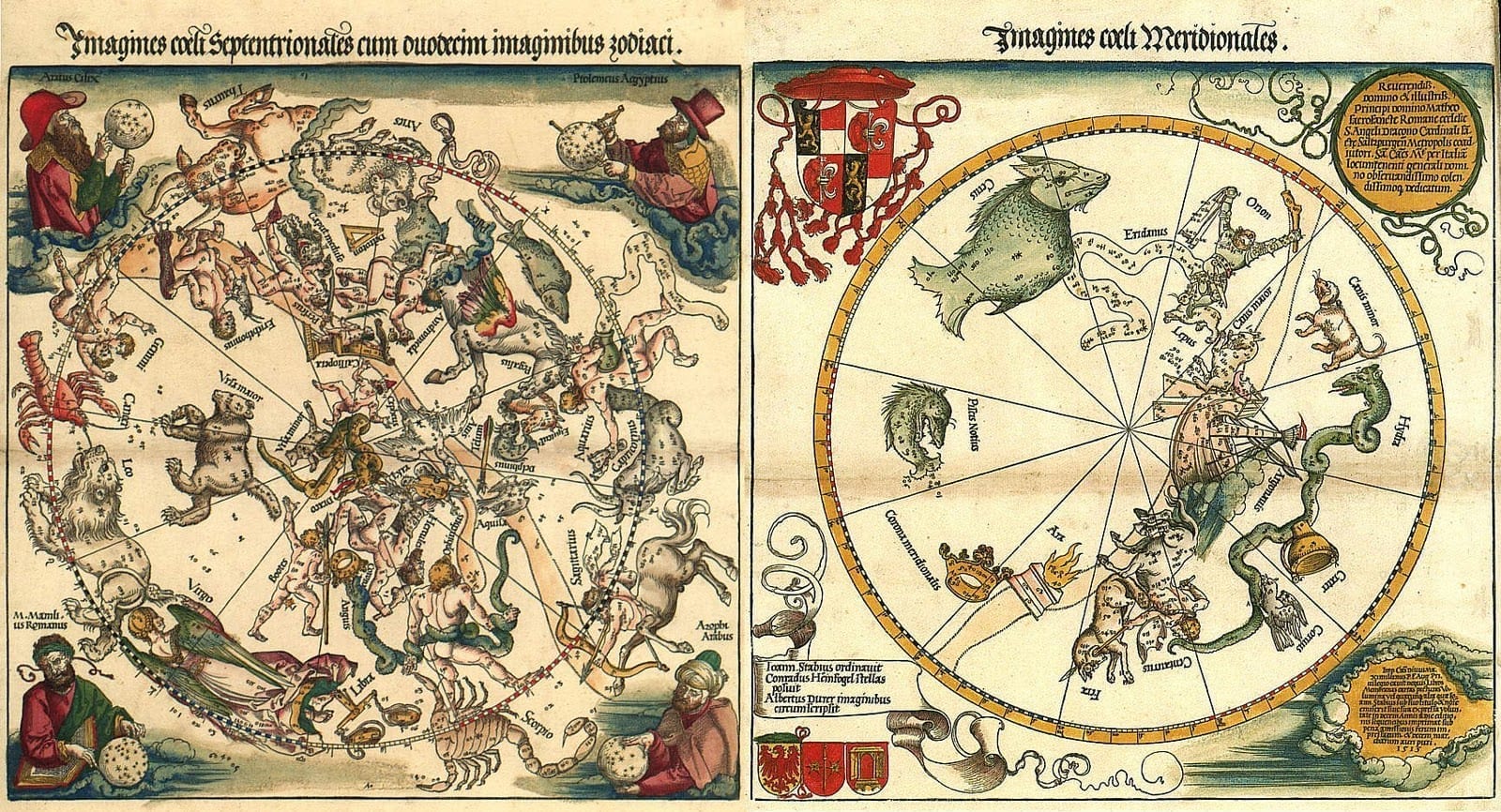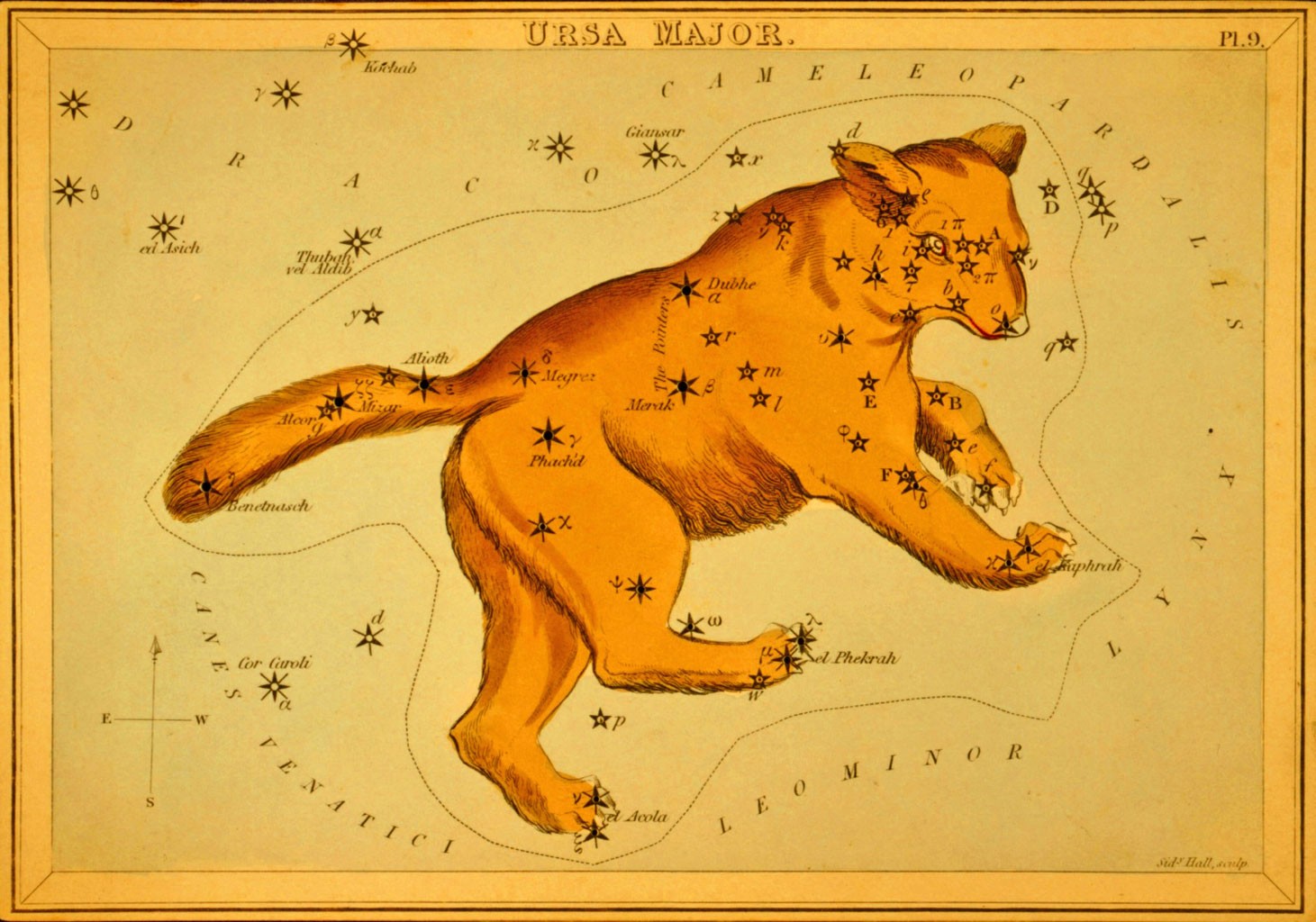One, looking at the puddle, sees mud
and the other is reflected in her stars.
Immanuel Kant
The sky has always attracted people: both dreamers and scientists. During the day, you can see clouds in it, which can be interpreted infinitely by your imagination or scientific research. At night, constellations appear, which further awaken abstract thinking and cause a lot of questions in people of science. You need to try to see Orion’s Belt or Ursa Major in a series of flashing lights. However, even the ancient Greeks left us clues.
Not only stars were marked on star maps, but also other celestial objects: planets, comets, satellites, nebulae – everything that could be somehow located and identified. Over time, there were more and more designations. A set of star maps capturing adjacent areas of the sky is called star atlases. Thanks to such cartography, it is now possible to determine the exact coordinates of celestial objects. However, if you decide to read the star map of the entire firmament, keep in mind that the west and east are depicted opposite on it, since it is assumed that a person looks up at the sky from below, as in real life. The designations on the maps are also conditional. The lines and boundaries of constellations are also considered conditional.
Thanks to such cartography, it is now possible to determine the exact coordinates of celestial objects
Maps and atlases of the starry sky were already compiled in ancient times. They looked like illustrations complementing the famous ancient Greek myths. Of course, such images are not considered astronomical works, since sometimes verbal descriptions were much more accurate than drawings. The first star maps appear in the 13th century. Here the constellations are already marked in the system of celestial coordinates. Schematic images of stars continued to be supplemented with graphic illustrations for a long time. This method helped to associate outlines with the name, visualize and memorize. Interestingly, despite a rather creative approach, the accuracy of the image reached up to 8 minutes of arc.
Maps and atlases of the starry sky were already compiled in ancient times. They looked like illustrations complementing the famous ancient Greek myths
The most ancient star map is believed to be a carved mammoth tusk found in Germany in 1979. Its carving resembles the Orion constellation. The famous Lascaux cave in France also has heavenly motifs. For example, an image of the Pleiades star cluster. In the cave of El Castillo in northern Spain, researchers have discovered a drawing of Corona Borealis constellation. Another ancient image of the constellation was discovered in the cave of La Tête du Lion in France. Scientists associate the bull and the pleiad of stars above it with the Taurus constellation.
Another unusual artifact confirming that people of the past were interested in celestial bodies is the Nebra sky disk. This is a bronze disk of around 30 centimeters. It is covered with aquamarine patina and gold inserts depicting the Sun, Moon, and stars. There is an assumption that this disk was used to measure the angle between the points of sunrise and sunset.
And these are not all examples of how our ancestors tried to count, organize and approach the firmament. To somehow systematize the study, the stars were grouped into constellations – patterns resembling creatures, deities, or mythological heroes. Today there are 88 constellations. The first 28 were recorded by Eudoxus of Cnidus, but few people remember this today, since the most popular star guide at that time was compiled by Claudius Ptolemy. In 140 BC, he recorded 48 constellations and described them in his work Almagest. Even though it was based on the geocentric model, i.e., according to the scientist, the planets revolved around the Earth, and not around the Sun, the work became the basis for many generations of astronomers.
All the mythological references of the constellations are products of the ancient Greeks’ fantasy. It was then that the Orion Belt, Ursa Major, and Ursa Minor, the Dragon, Virgo, Hydra, and many others appeared. Some legends are associated with the zodiac constellations. They are used to track the movement of the center of the Sun during rotation throughout the year along the ecliptic. There are also asterisms, that should not be confused with constellations. An asterism is a certain group of stars with a recognizable shape and a fixed name, but it can be in several constellations at once. And the thing is that from Earth it seems to us that the stars formed in the drawing are located close. In fact, they may be very far apart from each other.
Ursa Major and Ursa Minor
Probably the most popular constellation in our time. Even children recognize two “dippers” in the sky. But it’s not just that it’s easy to identify. Ursa Major constellation is circumpolar, which means that it is visible above the horizon at any time of the year. However, it is best traced in spring and summer. Next to the Ursa Major, you can see Boötes, Canes Venatici, Leo Minor, Lynx, and Ursa Minor. On a clear night, 125 stars can be seen in the Ursa Major constellation, but the brightest stars are seven, and they form a familiar figure: a deep dipper with a long curved handle. The legend has an explanation for this strange shape.
Ursa Major
In Arcadia, King Lycaon had a daughter, Callisto. Zeus was captivated by her beauty, and Hera found out about it and turned the beauty into a bear. When Arcas, the son of Callisto and Zeus returned home from hunting, he got scared and pulled the bowstring. Zeus did not allow the murder to happen and, grabbing the bear by the tail, took her to the sky. During the ascent to the stars, the tail lengthened and became a series of stars in the sky. Callisto had a maid whom she loved very much. Zeus transferred her to the sky in the form of a little bear (Ursa Minor). He turned his son into the Boötes (“ox-driver”) constellation. He guards his mother against the hounds (Canes Venatici) that he holds tightly by the leash.
There is also a more prosaic explanation for the names of Ursa Major and Ursa Minor. In Greece, these constellations are observed low over the northern side of the horizon. Ancient Greeks believed only bears lived in the northernmost part of the Earth.
The Boötes (“ox-driver”)
Perseus, Pegasus and Equuleus
The Perseus constellation is mostly located in the Milky Way, so it is clearly visible. Auriga, Taurus, Aries, Andromeda, and Cassiopeia constellations are located near it. The Perseus constellation is best seen at night from November to March. If you connect all 90 stars or 11 of the brightest and most noticeable with a solid line, you will get an elongated polygon. The ancient Greeks saw the hero Perseus in it, the son of Zeus and Danae. He raises his right hand high, and with his left hand, he holds a bag with the head of Medusa.
There are several variable stars in this constellation. This means that their brightness changes cyclically. The Algol star is a representative of a class of visual binary stars, in which one of the components (the main star) is brighter than the second component (satellite). Located close to each other, the stars make an orbital motion around their common center of mass. As a result, when the satellite is in front of the main star, its light temporarily weakens.
The Perseus
According to myths, Perseus was instructed to kill Medusa by King Polydectes, who wanted to get rid of him. The king wanted to marry the hero’s mother, the beautiful Danae, and Perseus defended her in every possible way. But the young man not only did not die but also performed a feat: he cut off Medusa’s head, after which Pegasus – a winged horse – appeared from her body. The story of Pegasus is also connected with the hero Bellerophon, who killed Chimera and became so proud that he wished to live in heaven with the gods. Zeus got angry and threw him into the realm of shadows. And Pegasus remained flying in the firmament. The constellation of Equuleus was highlighted in the star catalog of Hipparchus. It’s probably accompanying Pegasus.
The Pegasus
Corona Borealis
A tiny but beautiful constellation with a very touching story. It is best seen from April to August. The nearest neighbors are the constellations of Hercules, Serpent, and Boötes. On a clear night, 20 stars can be seen in the constellation, but all of them are quite faint. However, the beauty of them is not in brightness, but in outline. Five stars of the fourth magnitude are arranged in the form of a crown, in the middle of which the bright star Gemma shines. There are both binary and variable stars in the constellation: for example, the star T, which periodically flashes. The first two flashes occurred in 1866 and 1946. During the flash, the star shines brighter than the others, and then it becomes barely noticeable in the firmament. A similar flash awaits another double star of Corona Borealis in 2026.
The Corona Borealis
This constellation has a long history. It relates to Aegeus and his son Theseus. The young man performed many feats and, finally, he had to go to the labyrinth to the Minotaur. In the labyrinth, Theseus was helped by Ariadne, who gave him a ball of thread that led him outside. Theseus and Ariadne fell in love with each other, and the hero returned with the bride. However, Ariadne, being the granddaughter of Zeus, was promised to Dionysus, the god of winemaking. He came to Theseus in a dream and told him to leave Ariadne; otherwise, the wrath of the Olympian gods would fall on him. Theseus left Ariadne on the island while she was sleeping. Waking up alone, the girl cried for a long time. Dionysus descended to her and took pity, and threw her wreath into the sky, where it turned into Corona Borealis constellation.
Many more legends and stories are related to the starry firmament. With the development of science, everyday associations and scientific terms began to appear in the names of constellations. So, Bayer named the constellations Dorado and Indus, and Lacaille perpetuated the names of scientific instruments Antliac and Octans. You can read more about the history of not only mythological but also other constellations in A. Bonov’s book Myths and Legends about the Constellations.
Фото на странице: Pascal Debrunner / Фотобанк Unsplash
Фото на главной странице сайта: Vedrana Filipović / Фотобанк Unsplash





























